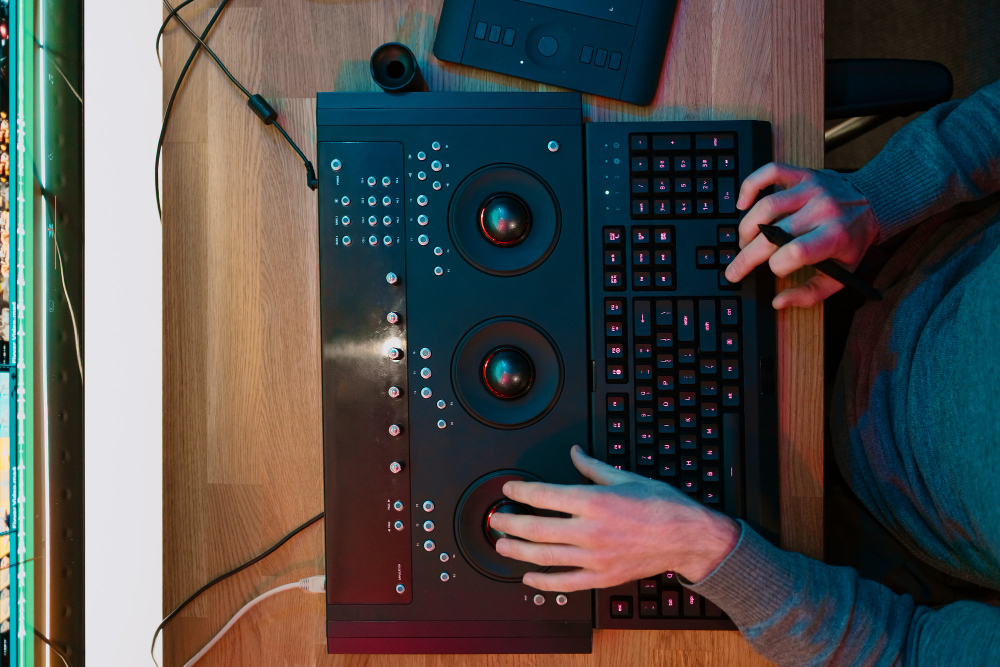Sound Reinforcement Technology: What's New

Modern sound reinforcement systems have undergone remarkable transformations over the past few years. From wireless innovations to AI-powered audio processing, these advances are reshaping how we experience sound across venues, events, and installations throughout Central Florida and beyond.
Whether you're managing a corporate conference center in Orlando, operating a house of worship in Tampa, or running a live music venue in Jacksonville, understanding the latest sound reinforcement technology can help you make informed decisions about your audio setup. The right system doesn't just amplify sound—it creates immersive experiences that captivate audiences and deliver crystal-clear communication.
This guide explores the cutting-edge developments in sound reinforcement technology and how they're revolutionizing audio experiences across various applications.
Digital Signal Processing Revolution
Digital Signal Processing (DSP) has become the backbone of modern sound reinforcement systems. Today's DSP units offer unprecedented control over audio signals, allowing technicians to fine-tune every aspect of sound reproduction with surgical precision.
Real-Time Audio Processing
Advanced DSP processors now handle complex audio manipulation in real-time without noticeable latency. These systems can automatically adjust equalization, compression, and limiting based on environmental conditions and audience size. Some processors even learn from acoustic feedback patterns to prevent unwanted noise before it occurs.
Room Correction Technology
Automatic room correction has evolved significantly. Modern systems use multiple measurement microphones placed throughout a venue to create detailed acoustic maps. The software then applies precise corrections to compensate for room acoustics, ensuring consistent sound quality regardless of where listeners are positioned.
Wireless Audio Innovation
The shift toward wireless audio solutions has accelerated dramatically, driven by reliability improvements and expanded frequency options.
Digital Wireless Systems
Today's digital wireless microphone systems offer broadcast-quality audio transmission with extended battery life and interference-resistant operation. Advanced encryption ensures secure transmission, while intelligent frequency coordination prevents conflicts between multiple wireless devices operating simultaneously.
Network Audio Protocols
Audio-over-IP technology has matured into a reliable standard for professional installations. Protocols like Dante and AVB allow audio signals to travel over standard Ethernet networks, simplifying installation while providing scalable, high-quality audio distribution throughout large facilities.
Line Array and Speaker Technology
Speaker technology continues advancing with improved efficiency, extended frequency response, and more precise directional control.
Compact Line Arrays
Manufacturers have developed smaller line array systems that deliver the directional control and even coverage previously available only in large-format systems. These compact arrays are perfect for venues with space constraints while maintaining professional sound quality standards.
Adaptive Directivity Speakers
Some manufacturers now offer speakers with electronically adjustable directivity patterns. These systems can modify their coverage patterns in real-time, adapting to different seating configurations or acoustic environments without physically repositioning equipment.
Artificial Intelligence Integration
AI technology is beginning to influence sound reinforcement systems in meaningful ways.
Intelligent Mixing
AI-powered mixing consoles can automatically adjust levels, apply appropriate processing, and even anticipate upcoming changes based on learned patterns from previous events. While human operators remain essential, these systems reduce workload and help prevent common mixing mistakes.
Predictive Maintenance
Smart monitoring systems track component performance and environmental conditions to predict when equipment maintenance will be needed. This proactive approach helps prevent system failures during critical events.
Power Amplification Advances
Amplifier technology has seen significant improvements in efficiency, power density, and integration capabilities.
Class D Evolution
Modern Class D amplifiers achieve remarkable efficiency levels while maintaining sound quality that rivals traditional linear amplifiers. These lightweight, cool-running units reduce power consumption and cooling requirements significantly.
Integrated Amplification
Many speakers now include built-in amplification specifically matched to their drivers. This integration optimizes performance while simplifying system design and reducing the number of separate components required.
Control and Monitoring Systems
System control interfaces have become more intuitive and comprehensive.
Mobile Control Applications
Technicians can now monitor and adjust sound reinforcement systems using tablet and smartphone applications. These mobile interfaces provide real-time system status, remote parameter adjustment, and instant alerts if problems arise.
Cloud-Based Management
Some systems offer cloud-based monitoring and control, allowing remote system management and performance tracking across multiple locations. This capability is particularly valuable for organizations managing sound systems across numerous facilities.
Environmental Considerations
Sustainability has become an important factor in sound reinforcement system design.
Energy Efficiency
Modern systems consume significantly less power than previous generations while delivering superior performance. Intelligent power management automatically reduces consumption during periods of low demand.
Longevity and Serviceability
Manufacturers increasingly design systems for extended operational life and easier maintenance. Modular designs allow component replacement without replacing entire systems, reducing waste and long-term costs.
Implementation Best Practices
Successfully deploying modern sound reinforcement technology requires careful planning and professional expertise.
System Design Considerations
Proper acoustic modeling and system design remain crucial for optimal performance. Advanced software tools help predict system behavior before installation, but experienced professionals are essential for interpreting results and making appropriate design decisions.
Integration Complexity
While individual components have become more sophisticated, system integration has grown more complex. Professional installation and configuration ensure all components work together seamlessly and perform at their full potential.
Maximizing Your Sound Investment
Sound reinforcement technology continues evolving at a rapid pace, offering exciting possibilities for enhanced audio experiences. From AI-powered mixing to wireless freedom and energy-efficient operation, these advances provide compelling reasons to evaluate your current audio setup.
The key to successful implementation lies in working with experienced professionals who understand both the technology and your specific requirements. Proper system design, quality installation, and ongoing support ensure you realize the full benefits of these technological advances.
If you're looking for sound reinforcement systems in Central Florida, contact Axiom Integration today to get a quote. Their expertise in the latest audio technologies can help you create exceptional sound experiences that meet your unique needs and budget requirements.